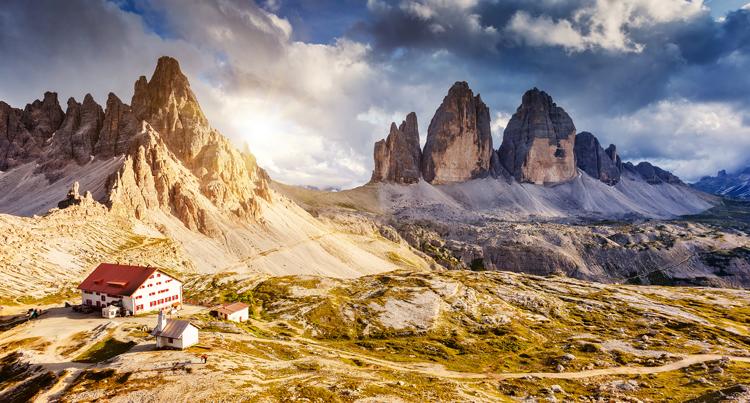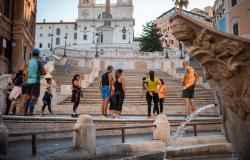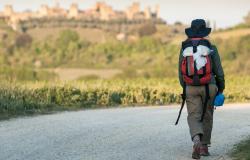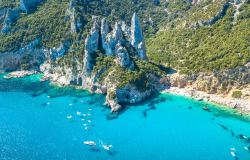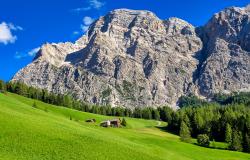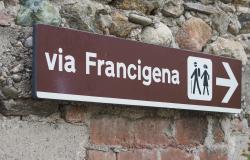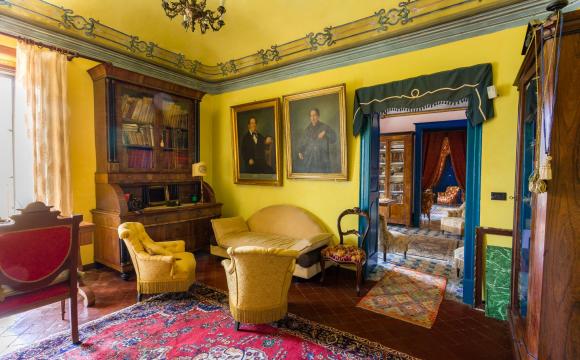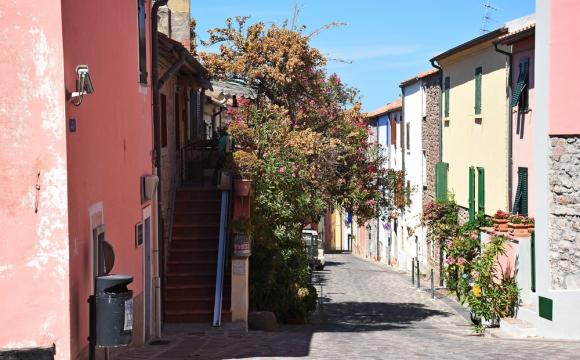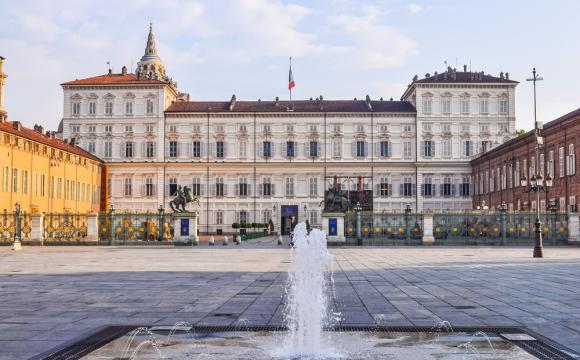Mountain huts in splendid panoramic positions abound in Italy, a country blessed with breathtaking mountain groups, such as the Dolomites. We have selected seven ‘rifugi’, to be reached on foot, that will reward you with magical views - and even a nice, well-deserved Italian meal (this list is by no means exhaustive and we’d be happy to hear your take on more amazing mountain huts in Italy).
Rifugio Roda di Vael

The Rifugio Roda di Vael (2283m) stands in the scenic saddle of the Ciampaz at the southern edge of the beautiful Catinaccio-Rosengarten group of the Dolomites. Inaugurated in 1906, it offers marvelous views of the Sella and Marmolada groups, and is an excellent starting point for hiking and climbing excursions around the Catinaccio. Open from early June to mid-October, it sleeps 50.
Rifugio Locatelli

The spot occupied by Rifugio Locatelli (2405m) offers stunning views of the famous Tre Cime di Lavaredo. Opened in 1883, it is reached from the Tre Cime di Lavaredo loop trail, the best way for hikers to admire the majesty of these three rock formations that have become one of the most photographed sights in the Dolomites. Open from mid-June to September, it sleeps 210; dawn on the Tre Cime is a show not to be missed. It can get very crowded in the summer.
Rifugio Nuvolau

The Rifugio Nuvolau (2575m), built in 1883, resembles an eagle’s nest positioned as it is on the summit of Mount Nuvolau. The views more than make up for the tiring uphill climb to the hut, especially in the light of dawn, as they stretch from the Marmolada to the Tofana mountains through Austrian glaciers. Its strategic position made it a major observation point during World War I. It is a stop along the famous Alta Via 1 (High Route) of the Dolomites, which begins at Braies Lake in the Val Pusteria and ends 120km later in the Dolomiti Bellunesi. Rifugio Nuvolau sleeps 25, but don’t expect any comfort here: the bathroom is outside and has no shower or warm water, warns us Gillian Price in her fabulous “Trekking in the Dolomites” guidebook.
Rifugio Pradidali

In the heart of the Pale di San Martino area, the Rifugio Pradidali (2278m) is a great starting point for hikes and climbs to the surrounding Dolomite peaks surpassing 3000 meters in height. Built in 1896 near a picturesque little lake, when the area was still part of the Austro-Hungarian empire, the hut often hosted the king of Belgium during his mountaineering trips to the Pale di San Martino, as Gillian Price explains in her “Shorter Walks in the Dolomites” guidebook.
Rifugio Luigi Brioschi

The Rifugio Luigi Brioschi (2410m) stands on the peak of the northern Grigna in the Prealps of Lombardy. The view is spectacular as you can see a good portion of Lake Como, the Po Valley, the Orobie peaks, the Disgrazia group, the Rhaetian Alps, the peaks of the Spluga Valley, all the way to the Swiss and French mountains. Inaugurated in 1895, it sleeps 34. From the hut depart all kinds of trails, from easy ones among the woods suitable for families to more challenging ones along via ferrata routes, and even ice clogged straits in winter for those (expert hikers) looking for adventure.
Rifugio Zamboni Zappa

The Rifugio Zamponi Zappa (2070m) is located in the picturesque grassy basin of the Alpe Prediola, at the foot of the east wall of the Monte Rosa (4635m) in the Val d’Aosta region. It is a great starting point for both easy hikes in the surroundings or more serious climbing feats, on rocks and ice, and even for bouldering (a form of rock climbing) thanks to the number of huge erratic boulders. Owned by CAI (Italian Alpine Club), it is open in summer.
Rifugio Dorigoni

In the National Park of the Stelvio, the Rifugio Dorigoni (2436m) is located in the Val Saent, one of the most beautiful valleys within the park and the entire group of the Ortles-Cevedale, a mountain range of the Southern Limestone Alps group in the Central Eastern Alps. The hut produces hydroelectric power through a turbine that uses the waters of the surrounding rivers. It can be reached by hiking the Rabbi Valley, along a path inhabited by marmots. Many excursions depart from the hut.
Have you been to any of these huts? Are there others you'd recommend?
